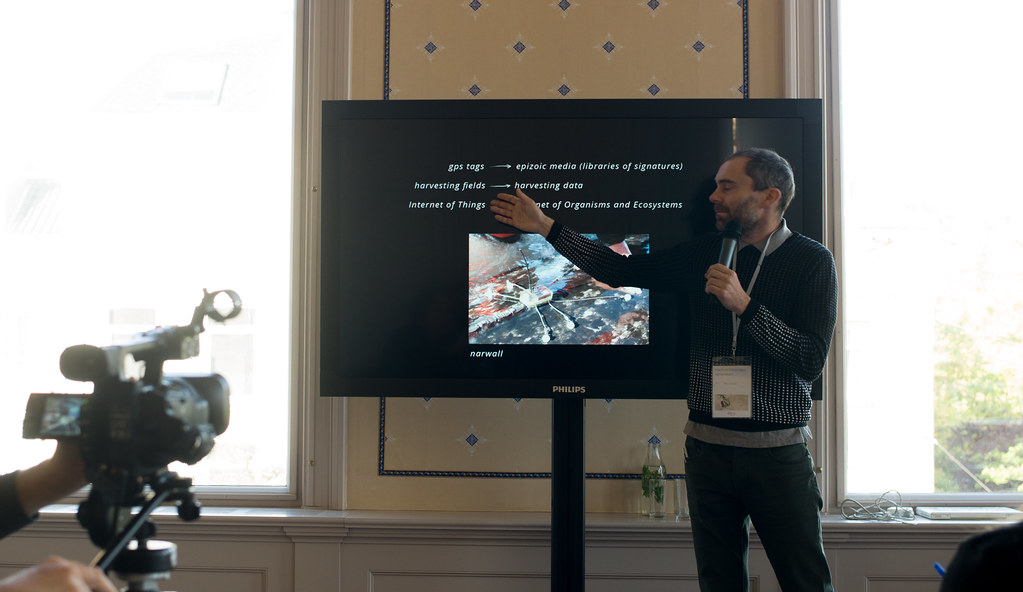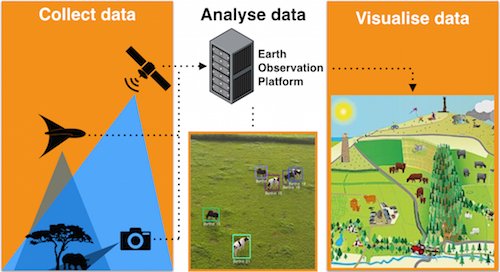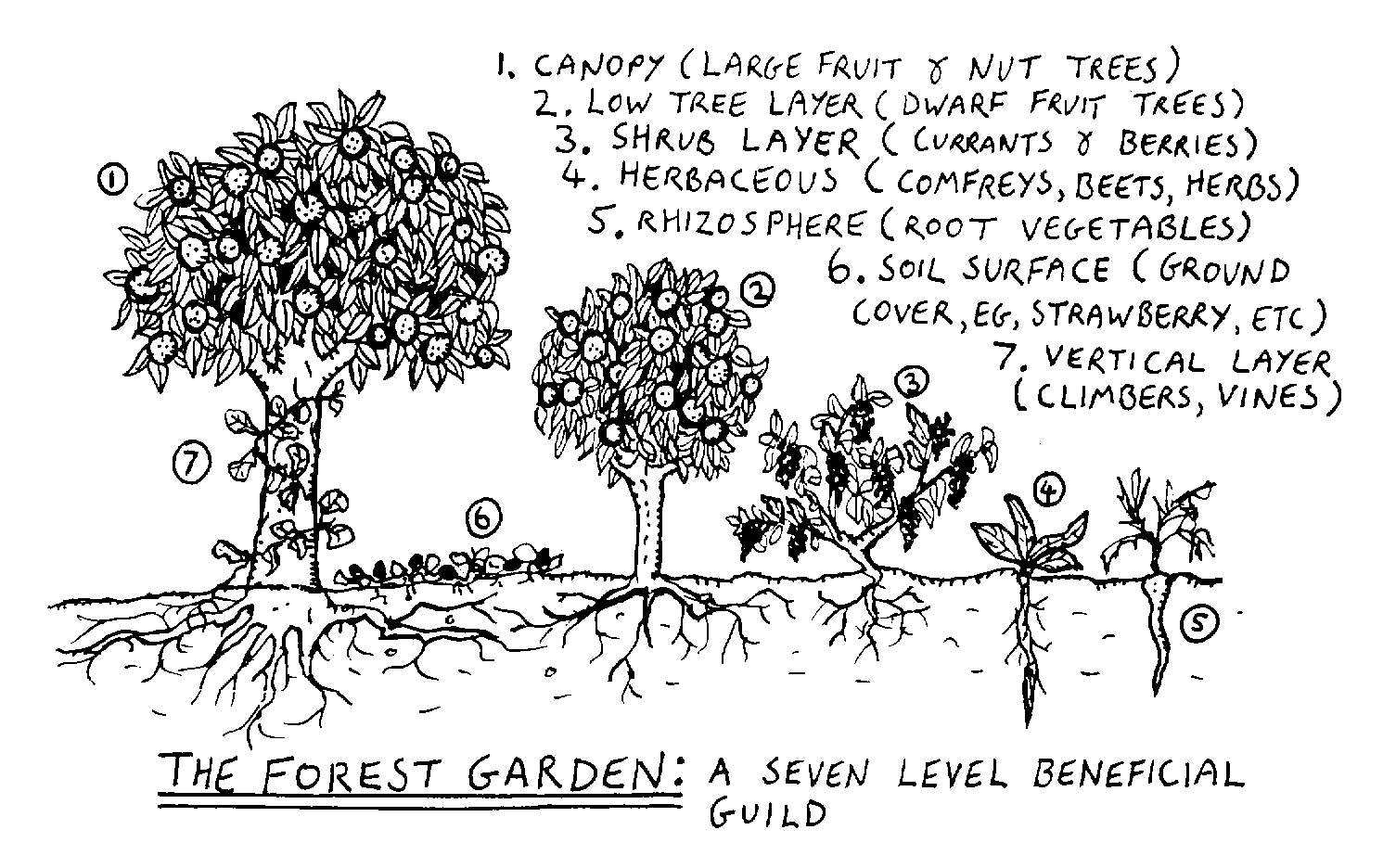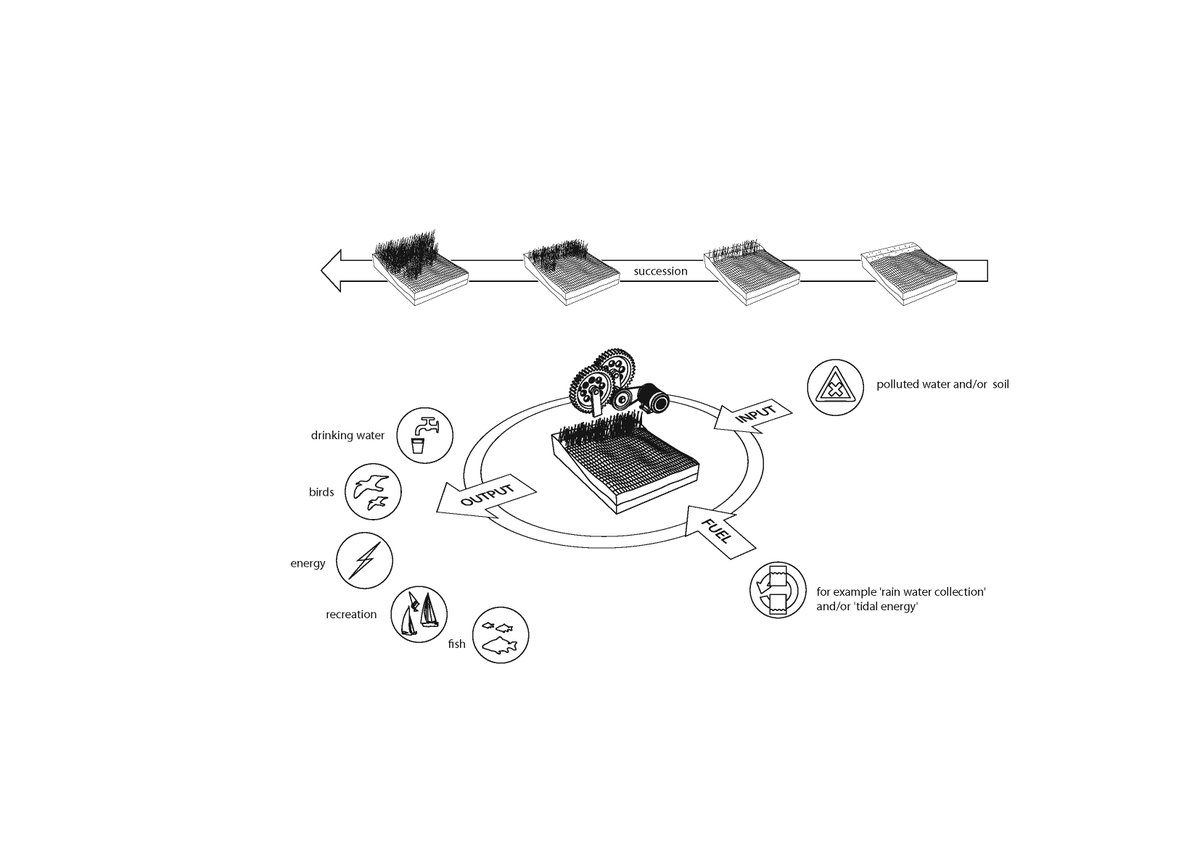Table of Contents
Machine Wilderness Symposium
Amsterdam, Artis Royal Zoo, 20151102
Lecture notes from the symposium, part of the Machine Wilderness programme designed by Theun Karelse of FoAM Amsterdam and Alice Smits of Zone2Source
Theun Karelse
- The term Machine Wilderness comes from the title of ISEA 2012, coined by Andrea Polli, borrowing from the cultural geographer Ron Horvath in the 1960. He wrote about machines in a negative way: machines are dumb, wilderness is a mess. Both ISEA and this Machine Wilderness event has a more positive approach to machines and to wilderness. There is interest to design technology beginning from the environment, where machines are so integrated in their environment that they're not easy to distinguish from it.
Augmented ecology and @augmentedeco:
1. how to transform GPS tags on animals to make much richer meanings (Microsoft: Technology for nature - individuals and groups; facebook for herds, anchor point for drones - hybrid ecology)
- danger - cyberpoaching - panna-211 (panna tiger in a reserve in india), don’t share photos from safaris, poachers can track the animals
- gps tags → epizoic media (libraries of signatures)
- harvesting fields → harvesting data
- IOT → internet of organisms and ecosystems
2. Ecological Robotics
- Daan van Dijk Darpa 2013, COTSBot (management of invasive starfish), Robird (management - scares birds away from Schiphol), TumbleWeed bot (based on plant movement - drifts, blows through the desert and collects environmental data), SwarmFarming (using robots for agriculture)
- Biocarbon engineering - planting 1mil trees per year using robotic drones
- Rainforest connect - conservation using 2nd hand phones - they listen for the sound of chainsaws, and report - monitoring
- MyBionicBird
- Compostable Drones - how do we deal with lifespan of tech in landscapes
- AI: mind (thinking machines) + bodies (acting machines) + environment → behaviour
Designing from:
- processes in the environment, beyond objects
- local habitats
- diverse knowledge systems
Designing towards cohabitation & intimacy

Erik de Jong
Prof at the UVA & Artis
“Natura Artis Magistra” (1838) - Nature is the teacher of art & science (Royal Zoological Society); → What does it mean for the future to connect art, science, nature…
- e.g. exhibition of microbes & micro-organisms
- Het Groote Museum - first museum in NL (1852) - in the future, a museum, a workplace for the antropocene (started in 1600 - colonialism, 1900 - industrialisation…), for man and nature, platform for discussion & exchange; where do we stand as humans on the earth; galleries on nature, science and technology, biomimicry, the future (cyborgs, replacements of nature…); laboratory nature - nature managed by man (manipulating genetics, etc.)
- E. Wilson “the artificial new environment into which technology has catapulted humanity” - what does this mean? (e.g. natural disasters, infrastructure failures (New York blackout in the storm in 2012))
- wilderness = 1st nature, cultural landscape (agriculture) - 2nd nature, designed nature (gardens, urban environments) - 3rd nature
- Louis le Roy, Turn off nature / turn on nature (1973) - not dominating but co-operating with nature - still dualistic thinking - machine ↔ nature
- we need a new language to describe interactions between machines and environments
- the etymology of the word machine = “device”, “instruments”, “apparatus”, “machine a habiter”…
- “wilderness” = “community of life untrammeled by man where man himself is a visitor, not to remain” - this changes in the antropocene
- city as metabolism - a new relationship between town and landscape - hybrid landscapes - deserted industrial locations, landfill reclamation…
- avoid confusions with pre-modern and mechanistic views
- finding a way to talk about hybrids, co-operation between technology and nature - a common vitality in reclaiming aesthetics as a process and not an object in the tangle of tech and nature - including philosophy, ethics, morals - responsibility of human nature towards non human nature
Petran Kockelkoren
Technological Disclosure of Landscapes
How technologies opened up our experience of landscapes?
- Nature is thought to be a healing experience, while cities and technologies are thought of as being alienating - inherited from the romantic era (for an opposing view see Romantic machine
- “Nature and memory”: The term “landscape” is originally Dutch.
- See the Dutch landscape painters of the Golden Age; usually without any technology (even thought the Dutch landscape was riddled with technology)
- “Nature is sublime” (19th ct.), “Technology is alienating” → loss of nature due to propagation of technology (Heidegger, etc.), in the 21st ct - the dualism between nature and technology begins to change - technology can re-connect humans to nature
- 19th ct - transport technology (train, etc.) - a revolution of how we experienced landscapes;
- railway spine - cultural pathology resulting from incorporation of technology - health claims related to train journeys; problem for insurance companies
- learning to cope with the phenomenon of speed and technology which hasn’t been integrated into daily life; 19th ct - hysteria, 20th ct. alien abductions, multiple personality disorders - symptoms are real, causes uncertain
- fairground attraction - simulation of a train/boat experience - fairground as exercise ground for “high speed” travel, immersive simulation, to learn to cope with the experience of speed - landscapes moving (things nearby flash by fast, further away things move slower) - people had to change the way they perceived things around them, which can be unsettling
- Victor Hugo - description of his train journeys “flowers are no longer flowers but colourful streaks…”
- Futurists - depicting speed and velocity, buildings start to dance, people flashing by, 'streaks - signs of speed'
- 20ct - car, monument to a car race - it alienated people from the central, static perspective, not so much from landscape
- Futurist Giacomo Balla - attempting to change perspective and coin new imaginaries for speed - we needed to re-normalise our senses - images and sounds help us cope with the new experiences…
- pop-art - streaks in comics - speeding cars
- zootrope - suggesting movement, children’s toys, artistic expression, scientific simulation of birds in flight (Max Ernst) - disclosing the world by means of technology changes our perception and sensory experience
- Muybridge - horses galloping - are they ever free from the ground (yes)
- Stereoscope - photograph with two different focus points - the world available in stereo - photographers began experimenting with focal points (depth, 'enhanced stereos' - issue with veracity); Bishop - if God wanted us to see this depth, he would have given us eyes further apart…; Scientific photo of the moon - very difficult (distance, etc.), but there is a wobble in the moon (the photos were taken 3 weeks apart) - “a step out of and beyond nature” - but it disclosed the possibility to view the moon much more intimately - a mediated view of nature, with a more intimate and immersive knowledge - a breakthrough in the view of technology
- Tintin - “destination Moon” - actual rockets and clothing inspired by Herge’ comic; project Tintin insterstellar nanosat mission to alpha centauri - Alan Bean (astronaut) - “the only artist who has been to the moon”, painting with moon-dust
- Andrea Polli (tracking data of hurricane Bob → Atmospheric Weatherworks - acoustic artwork to understand nature on its own terms, complex rhythms and melodies of nature on human scale) & Gavin Starks (translated data from telescope images into sounds - soothing synth sounds - a deception; but the image itself is mediated already (radiowaves translated into image)) discussion at DEAF 2004 - we are always embedded in cultural and historical incorporations of technology - nature is always a mediated event
- Husserl “an experience of nature is always artificial” - documentaries - mediated, staged, interpreted events
- Esther Polak - GPS traces through the city “Amsterdam Real Time” (2002) - the mediated event - sky-drawing, “Milk”, fishing boats - different stories emerge than when we look at photographs - new positioning of artists in the field, just breaking ground
- 3D projections in cinemas, art galleries - contemporary fairgrounds to exercise new perceptions
Anouk Visser & Reinier Kop
Creating Technology for nature conservation, in game reserves and agricultural mapping, Dutch UAS
- primarily drones
- motivation:
- rhino poaching, the anti-poaching drones need to be cheap and simple for the rangers to use
- game counting (compulsory)
- elevation/photographic maps and 3D models
- where to:
- object detection/recognition - reduces time needed to go through the images, towards 100% accuracy
- AI counting tool - automatic reporting of current states and changes over time
- expand to other sensors (multispectral/thermal) for precision agriculture and crop monitoring
- Earth Observation Platform - gathering analysing and visualisation of data - for any environment
- “surveillance company for nature” - military algorithms not open sourced
Xavier San Giorgi
Relationships between technology and food forestry
Reading technology or reading nature?
- Food forest - farming like the forest - perennial plants, complete diet farmed all year around, systems approach - design science from a holistic perspective; robotics can help with monitoring of feedback loops
- more biodiversity, more biomass, more yield, more lushness
- low maintenance system
- Layers of the forest (overstory, understory, shrubs, herbs, ground-cover, root, climber
- biodiversity - including plants, animals, insects, microbes… - in an equilibrium; if not - more work!
- healthy soil (springiness of forest soil)
- Too often we design agricultural spaces in order to adapt to machinery we use
- Yeoman’s Keyline Scale of permanence (change effort - energy / relative permanence - time)
- Food forests exist more in tropical/subtropical gardens
- How do you design a food forest for a city scape? In recreation areas, plants that aren’t commercially viable, that are difficult to harvest industrially
Tech requirements:
- touch earth lightly
- broaden our senses, be aware it shapes the way we behave
- help ppl reconnect to nature
- be amazed with and learn about the environment, give it meaning
- not a substitution, it’s always more layered - to design more complex agricultures
Paul Roncke
- Deep Longing to own a piece of land
- Urban agriculture is not going to solve the food problem, but it points to a DIY approach - hands, heart & head, food (consumption), playfulness, fantasy (arcadia)
- Relationship between food and landscape
- Olmsted, Frederick Law - landscape architecture (19th ct), Ian McHarg (1970s) - “Design with nature” (1967) (water ecological system of great complexity & ritual)
- dutch way of making land - engineers, farmers, politicians, NOT landscape architects
Landscape Machines
- complex systems including the landscape and technology - yes we intervene, but the ecosystem responds to it with more vividness
- post doomsday landscapes
- “Venice in the desert”, icebergs cooling cities…
- “beautiful landscapes, small scale, green (garden) / “sublime landscapes” grand, red, giant, phatasmagoric… (landscape)
- technology in a landscape - should be sublime - regeneration, over-access of power - energetic vision of landscapes (usually without human beings…)
- fluctuating results, hidden technology, embodied experience - with “Fremdkörper” in the centre (the ecological body has to work harder to process) - in a constant dynamic environment - continuous adaptation
- flexible/responsive morphology - designers introduce fremdkörper, the ecosystem responds - is this co-evolution or manipulation?
- Karim van Wonderen + Sophia Molpheta “De Zeeuwse Tong Project” - “ont-poldering” - nature + agriculture - “saline landscapes”, transition between sea and the land, more biodiversity + more fish yield
Spela Petric
Reified Nature / Natured Technology
… in projects including Miserable Machines (2015), Voyager 140 AU (2013) - metabolic algorithm in interaction with the environment; PSX consultancy, sex toys for plants (2014); Skotopoiesis (2015) confronting the vegetal otherness - how we comprehend the environment, biosemiosis; Naval Gazing
Naval Gazing (is navel gazing)
- test facility seaweed centre on Tessel
- nutrients from the Rhine can sustain substantial primary production in the north sea - could it be converted in seaweed biomass? - growing brown seaweed in the winter - it can clean up the ocean, useful in cosmetics… in springtime other organisms would take over… a theory at this point
- how to make a sea garden? a system where humans and nature co-exist
- BUT: it isn’t easy to cultivate seaweed in the north sea… - the north sea is a very hostile environment…
- Rachel Carson “The sea around us” (1951) - cybernetics and ecosystems - interconnectedness of things
- Harvesting the sea - started in the romantic period
- Knowing more about strange environments - also allows to exploit it better (for entertainment, extraction…)
- Inspirations: Strandbeest (Theo Janssens) and others
- Habiton - Man-made future habitat moved by the wind - it tumbles through the ocean and collects organisms/biomass, eventually it sinks to the bottom; human made object appropriated by nature
- All resolution methods failed
Miserable Machines
- Differences between technology and living organisms
- “Soot-o-mat” Mussel muscle - ultimate sacrifice of living tissue for the production of 'excess' - soot-o-mat
- Hybridity is a slippery slope - sometimes things should be respected for what they are rather than being forced to 'hybridise'
Kenzo
Attention, movement of water and air in and around the body

Guszti Eiben
Evolving robotic ecosystems - nature inspired robotics/computer science (evolution as inspiration - influences language)
Takeaway messages
1. Artificial evolution is real, not an emulation of a 'real' evolution, just another form (Darwin evolution, Watson & Crick DNA, Turning & Von Neumann - creating evolution (computers) - programmers set the rules)
- link between evolution (biology) & problem solving (engineering): individuals (in a biological framework), natural selection (choosing fitness), reproduction (digital sex)
- evolutionary algorithm (evaluation-selection-variation loop)
- it can solve hard problems, cope with changes and deliver original solutions
- Macroscopic view (after Dennett): if you have variation, heredity and selection you must get evolution. Variation - push towards novelty, selection - push towards quality
Historical context
- (19-20 ct) Wetware (biosphere, we can observe what has happened in the past and present, in vivo)
- (20-21 ct) Software (evolutionary computing, a generative concept, in silico)
- (21ct) Hardware (evolution of things, in materio)
2. Robots can be evolved
- not all humanoid, not all mechatronics (soft robotics)
- evolution can create intelligence → artificial evolution can create artificial intelligence
- intelligence and embodiment: environment + body + mind → behaviour (AI in 20ct. narrow view of only the mind - chess, in now body + mind (and hopefully also environment) - football
- Genotypes (variation - mutation & crossover) & phenotypes (selection) - can be done in robotics too
- behaviour can evolve in robot populations - we know how to evolve software brains, how to evolve physical bodies → modules/cells or 3d printer (artificial womb)
- ethical dimension - this can get out of hand… (e.g. radiation hazard, biohazard → robohazard?) - do we need a “kill switch”; we probably don’t want distributed birthing robots, but a centralised birth clinic, with strict control…
- challenge: simulations don’t scale up very well
- Cambridge: mother robot that produces 'a child' consisting of active and passive parts, that can move on its own
- application: breeding farm for service robots or pets, entertainment (robotic parcs…); robot colonies for terraforming or ultra deep mining
- science: “cyclotron for evolution”, understanding life, evolution of body & brain, robosphere
In Nature: From evolutionary computation to the evolution of things
Ivan Henriques
Hybrid forms: JAP, PNBM, SM: wet & dry machines
- interspecimen communication
- environmental robotics
- workshop on symbiotic systems, using Amstelpark as a medium, exploring the needs and opportunities of biorobotic systems (abiotic systems - solar, temp, wind, water + biotic systems (plants, animals, bacteria); creating systems to enter a dialogue with the environment - integrated interdependent systems
- energy systems
Judith van der Elst
Forest bathing - digital technologies for the enhancement of sensory experience
- understanding human spatial intelligence; mapping how native american indians relate to the landscape - our technological system tends to be too flat; flow, relationships, in-between spaces
- embodied research - what would an embodied education look like, making use of ubiquitous computing related to landscape?
- extending the bodies with digital technologies; how can they help us improve our senses?
- understanding processes in the semiosphere
- exploration in Amstelpark + University of Urbino - birdsong (sonotopes) connected to scents of landscapes + how do smells and sounds interact
- plants smell different when transplanted from their natural environment to a cultivated environment (e.g. a park) - exploring non human languages in the semiosphere (workshop in the spring)
Field robotics
Discussion lead by Theun Karelse
- experimentation in landscapes: how do you connect to it, how do we explore it
- make an experiment starting from that landscape to create a robotic entity
- borrowed scenery: asian gardening technique - including the landscape that isn’t a part of the garden
- first experiment in a small village in cornwall connected to five different landscapes - the landscapes change quite quickly (industrial, forest, coast)
- how can you connect mind+body+environment - how would the robotic species develop in different environments
- the goal is to have an exercise in designing environmental robots with the objective to understand how technology can be more subtle towards our landscapes - creativity?
- borrowed landscape - also an english invention - landscape outside separated by a fence, so the wild animals cannot enter; a robotic creature - should do something else respond to a range of different environments
- how do the machines/robots perceive/experience the different landscapes?
- begin with observing and mapping (on cards) - what you see (treetops, soil, sky…), actions (migrating, decomposing…), textures (crunchy, sticky, slimy, fluffy)
- how does the robot live in this system, how does it interact and die?
- beyond functionality and utilitarianism; starting point: it has no purpose; the systems exist for their own purpose → to exist for some time, it’s a stakeholder in the environment, so it wants the environment to keep existing.
- defined capabilities - the cards could be a way to explore capabilities of the hypothetic machines; SICS experiment in expression of emotion through facial recognition with masks on people’s faces to understand what the computer might see; try to have the participants explore the environment with limitations and capabilities of hypothetic machines
- how could the humans explore the environment the way a limited machine/robot might do it? e.g. immersion, distractions, bodily/sensory constraints - even before the robot exists, you try to experience what it might be like for that being to exist
- What would the creatures respond to their habitat? What would they feed on? Where would they exist (in the earth, in the sky…)
- Beyond mimicry of existing biological movement - different set of responses (heat, humidity…) - what kind of patterns would the robots make?
- What vulnerabilities could they have? Can robots be suicidal? Can you have survival without purpose? What is survival from the POV of the robot - self-preservation, learning from the environment, dissolution into the environment? Is there reproduction?
- The experiment should include the robot AND the habitat - and how they might change through their interactions?
- How does the robot learn (procedures)? (design question) How can you make a system which is autonomous for as long as possible?
- Longer timeframes (Gerrit van Bakel - machines that slowly walk in the landscape), something happens once in 20 years, or so fast/ so slowly that it isn’t humanly perceptible. making links to things that technologies aren’t usually designed to do
- The imaginary dimension - people will make stories about it, at which point can you say whether it works or not?
- How will the robot have/experience a sense of agency and meaning?
- Machines that are sensitive and sensible
- How are the humans involved, if at all? How do the robots affect or interact with them?
- Define what you mean by co-habitation, participation, interaction…
- Can the robot help to overcome deficiencies in the landscape? How does it contribute to the landscape?
- How to avoid negative effects? Watch out not to introduce an invasive species which puts too much strain into the habitat?
- It must be pinpointed and defined what the goal is. The question is to rephrase the role of robotics as part of a much larger discussion of the role of humans and technologies in the landscape. Very important to make this clear before starting to work.
- You could make machines that can sense one thing and do one thing, then experiment.
- You might have a community of small robots that behave like one organism, instead of one big one; the simpler the robot individuals, the easier it might be to adapt to the environment
- How can the robots become a part of a larger living landscape? A whole range of processes happen - cultural, cultivated, wild, industrial, rural, tidal, cyclical… but everything is also always a part of a larger whole
- How do you treat the whole landscape as a robotic entity?
- Do you want to intervene in the entropy that is a part of that landscape or do you want to intervene and change it?
- What kinds of questions do we ask in the design process of an artificial organism that would co-exist in a landscape… a design science that starts from something that is as complex and changing as an ecological habitat? What is that process like? What the robot actually ends up doing is secondary
- connecting with other intelligencies in the landscape; collect information from plants, animals, pollution, air… (analogy of 'smart cities' that collect information from humans); how might plants and animals react to pollution, for example?
- the landscape might need technology so that humans might be more aware; to find out what has been hidden from our view (long timeframes, different layers and rhythms)
- look at ritual behaviour across different species
- how distinct do you want the robots to be from the environment? what do you want to find out from the environment? how will you introduce it into the environment?
- robots to redevelop landscapes after disasters? terraforming
- it isn’t so obvious to understand what is missing from our landscapes (e.g. missing elephants in EU forests; indigenous farming in America - to Europeans it looked like wilderness)
- First: find out how you as a person connect with a landscape; feeling the sweat and pain of the landscape (observe, then interact)

References
- Research is Ceremony, Indigenous Research Methods, by Shawn Wilson
- Tending the Wild, Native american Knowledge and The Management of California's Natural Resources, by Kat Anderson
- Wired Wilderness, Technologies of Tracking and the Making of Modern Wildlife, by Etienne Benson
- Wildlife in the Anthropocene, Conservation after Nature, by Jamie Lorimer
- Alien Phenomenology, or What It's Like to Be a Thing, by Ian Bogost
- Nature Performed, Environemt, Culture and Performance, ed. Bronislaw Szerszynski et all
- How Things Shape The Mind, A Theory of Material Engagement, Lambros Malafouris
- How Forests Think, Towards an Anthropology beyond the Human, by Eduardo Kohn
- Media, Ecology and Conservation, Using the media to protect the world's wildlife and ecosystems, by John Blewitt
- The Marvelous Clouds, Towards a Philosophy of Elemental Media, by John Durham Peters
- Becoming Animal, An Earthly Cosmology, by David Abram
- CowCam, Kuhe fotografieren ihre Welt, by Christoph Sigrist
- Drone, by Adam Rothstein, part of the Object Lessons series
- Wilder Mann, the image of the savage, by Charles Freger
- The Sympathy of Things, Ruskin and the Ecology of Design, by Lars Spuybroek
- Propeller, by Roy Villevoy and Jan Dietvorst
- A Fieldguide to Next Doggerland, by Theun Karelse






